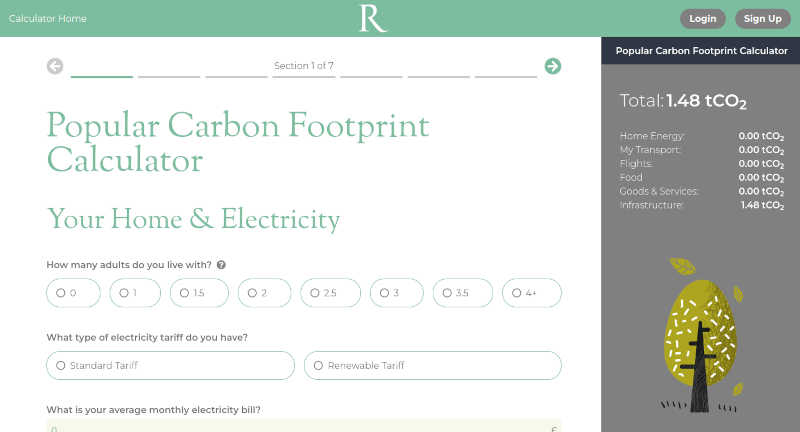Carbon Savvy Calculator
Calculate your carbon footprint and see which areas of your life have higher and lower CO2 emissions and the easiest, most satisfying ways to reduce them. You can also track your progress as you make changes to reduce your carbon footprint towards net zero.
Find out your carbon footprint for free here, using the Carbon Savvy calculator. (Note that the Login and Sign Up for the Carbon Savvy calculator is separate from that for the Resurgence website.)
Find out your carbon footprint
The story of the Carbon Calculator
Back in 2002 Resurgence put online one of the first personal carbon footprint calculators, created by Mukti Kumar Mitchell, who was passionate about carbon footprinting. The Resurgence carbon calculator came first in an international survey of online footprint calculators for being the most accurate and user friendly calculator available to the general public at that time.
Mukti was dedicated to low carbon travel and to sailing boats for several years, until a week spent at the houses of parliament as an intern gave him the information that one of the major areas of excess CO2 emissions comes from Britain's old houses, and so he founded Mitchell & Dickinson to provide insulation services for period properties in 2010. Now well established, they have saved 100,000 tonnes of CO2 (at January 2024).
Ten years later Mukti returned to his earlier passion, raising awareness about carbon reductions, by founding Carbon Savvy in 2020. Carbon Savvy helps people understand their own carbon footprint and feel empowered to do something about it, as well as working with councils to achieve their net zero goals.
Carbon Savvy's range of carbon footprint calculators build on the original Resurgence calculator which many of our readers have used over the years, and now enable you to save a track your footprint over time, and get tailored advice on how to reduce it.
Find out your carbon footprint
Here's another carbon calculator:






